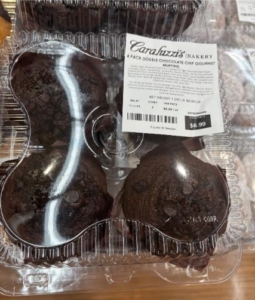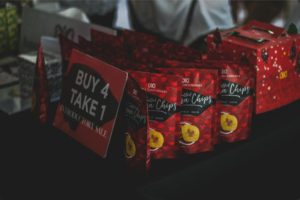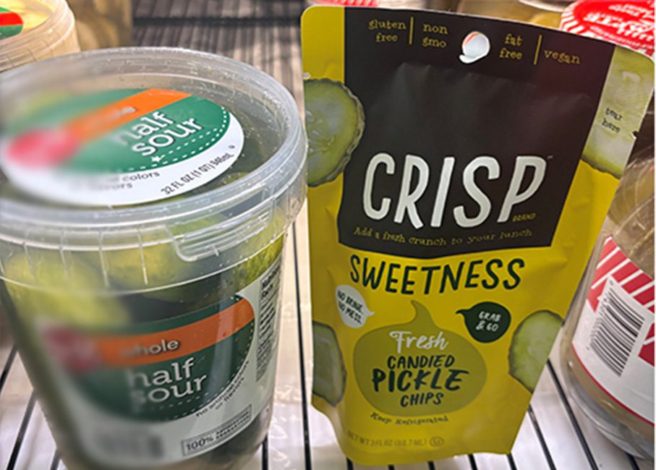At a Glance
- Flexible package options deliver space efficiency, lower costs, and sustainability benefits, but face challenges with protection, speed, and recycling.
- Rigid containers provide superior protection, speed, and product visibility, but take more storage space, add shipping costs, and carry higher environmental impacts.
- Smart brands mix both — flexible for efficiency and labeling, rigid for protection and presentation — matching packaging to product and consumer needs.
- The takeaway: there’s no single winner; the right choice depends on balancing safety, convenience, sustainability, and brand values.
Every food brand today faces a surprisingly complex packaging decision. Choosing between flexible packaging, such as squeezable pouches and bags, and rigid plastic containers is more than just a matter of holding food. It’s a wise decision that affects shipping costs and consumer loyalty. Get it wrong, and you’re looking at a shortened shelf life, frustrated customers, and a damaged brand reputation.
Behind every purchasing decision lies a fierce competition between two packaging philosophies that is reshaping how we buy, store, and consume food — and occasionally makes us question our life choices when we can’t open that supposedly “easy-t0-open” package at 6 AM.
With 55 years in the packaging industry, Inline Plastics has learned that the most critical packaging decisions happen where products meet consumers, not in boardrooms. This guide explains the real benefits and challenges of flexible and rigid packaging. We’ll help you see which option is best for various uses, all without the confusing corporate jargon.
Why This Choice Matters
The modern consumer has become a packaging perfectionist (seriously).
They want products that:
- Protect their food.
- Fit their lifestyle.
- Match their environmental values.
- Understand their convenience preferences.
Retailers are packing shelves tighter than a vacuum-sealed bag. At the same time, municipal laws are evolving more rapidly than fashion trends.
It’s Time for the Packaging Showdown
 To find the best packaging solution, we must go beyond surface assumptions. We need to see how each option performs in real-world situations. Both flexible and rigid packaging have undergone significant changes. Each type has unique advantages, which make it suitable for various applications. Now, let’s ring the metaphorical showdown bell!
To find the best packaging solution, we must go beyond surface assumptions. We need to see how each option performs in real-world situations. Both flexible and rigid packaging have undergone significant changes. Each type has unique advantages, which make it suitable for various applications. Now, let’s ring the metaphorical showdown bell!
Flexible Packaging: The Shape-Shifting Champion
Flexible packaging is like the yoga instructor of the food packaging world — adaptable, space-efficient, and surprisingly strong. These pouches, bags, and film-sealed containers are flexible. They can fit into even the smallest spaces of both food businesses and consumers’ refrigerators.
The Flexible Advantage:
- Shelf-life superpowers: Flexible packages can include specialized films that allow products to “breathe” at just the right rate. This can be controlled with Modified Atmosphere Packaging (MAP).
- Shipping efficiency: One truckload of flexible packaging can carry significantly more than a truckload of rigid containers. This is due to its compact storage.
- Significant reduction in greenhouse gas emissions: These solutions enable higher package density per shipment and weigh significantly less than traditional options. This change greatly reduces transportation-related emissions in the supply chain.
- Consumer convenience: Many flexible packages feature handles and easy-grip designs, making them convenient to use.
- Graphic real estate: The surface of the flexible package offers ample room for cooking directions, nutrition details, and allergy warnings.
- Cost-effectiveness: Flexible packaging reduces overall expenses through lower material costs and decreased shipping expenditures.
The Flexible Challenges:
- Protection limitations: Less protection is provided for delicate items, such as cut fruit, during transport.
- Loading speed: Slower filling processes in high-volume operations.
- Recycling problems: Multi-layer materials often carry recycling code 7 (which is “other”), which makes them difficult to recycle through standard systems. These include products such as many compostable containers.
- Skin burn risk: Hot products in flexible containers, such as your famous rotisserie chicken, can be hazardous. If consumers pick them up from the bottom and don’t use the handles, they risk burns.
Rigid Plastic Containers: The Protective Fortress
 Rigid containers are the bodyguards of the packaging world — strong, reliable, and ready to withstand impact to protect what’s inside. These stackable, sturdy containers have been staples in grocery stores for decades.
Rigid containers are the bodyguards of the packaging world — strong, reliable, and ready to withstand impact to protect what’s inside. These stackable, sturdy containers have been staples in grocery stores for decades.
The Rigid Advantage:
- Excellent protection: Perfect for keeping delicate items safe, like berries, prepared salads, cut fruit, and baked goods.
- Speed of operations: Faster loading processes for high-volume retailers.
- Visual appeal: Crystal-clear visibility enables customers to inspect products before making a purchase.
- Stackability: Efficient use of vertical shelf space and refrigerator organization.
The Rigid Reality Check:
- Storage demands: Requires more warehouse and transport space.
- Environmental impact: A higher carbon footprint is associated with shipping volume and weight.
- Limited flexibility: Cannot adapt to varying product sizes or unusual storage spaces.
- Condensation issues: Both rigid and flexible packages can develop condensation when temperatures shift. In opaque materials — whether flexible or rigid — the moisture isn’t visible, though it’s still there.
- Skin burn risk: Like flexible packaging, hot products in rigid containers can be dangerous to handle without proper precautions, such as handles.
Food Safety Note: Both packaging types offer robust tamper-evident and tamper-resistant options. Flexible packages typically have perforated tabs that need to be removed before using the zipper, if one is offered. Rigid containers may have tamper-evident bands, seals, or locks that indicate if the package has been opened.
Film-Seal Packaging: The Hybrid Hero
When flexible meets rigid, you get the best of both worlds — a film-seal package. These containers pair a sturdy rigid base with a flexible film lid, combining protection and visibility with efficient sealing and sustainability benefits.
The Film-Seal Advantage:
- Strong foundation: The rigid base protects against crushing while maintaining stackability.
- Efficient sealing: A thin flexible film creates a secure, tamper-evident closure with less material.
- Extended freshness: Ideal for Modified Atmosphere Packaging (MAP) applications that preserve color, flavor, and texture.
- Sustainability gains: Uses less plastic overall than fully rigid containers, helping reduce material waste.
Best for: Deli items, fresh-cut produce, salads, and ready-to-eat meals where shelf appeal and freshness go hand in hand.
Strategic Packaging Decisions That Drive Success
Innovative food brands don’t pick sides — they like solutions. The best companies use both types of packaging wisely. They match every kind to its perfect use.
Choose flexible for:
- Brands prioritizing shipping efficiency and storage optimization.
- Products needing extensive labeling and consumer communication.
- Applications where weight and space savings translate into cost advantages.
- Modified Atmosphere Packaging (MAP) applications.
Choose rigid for:
- Delicate products requiring maximum protection during transport.
- Items where visual presentation drives purchase decisions.
- High-volume operations requiring rapid packaging speeds.
- Products benefiting from stackable, organized display formats.
It’s Time to Flex Rigid Thinking
 Choosing flexible or rigid packaging isn’t about picking a winner. It’s about finding what suits your needs best. Consider what your product requires. Think about what your customers want. Reflect on how your operations run. Also, keep your environmental goals in mind. The most successful brands treat packaging as a smart business tool, not just a container.
Choosing flexible or rigid packaging isn’t about picking a winner. It’s about finding what suits your needs best. Consider what your product requires. Think about what your customers want. Reflect on how your operations run. Also, keep your environmental goals in mind. The most successful brands treat packaging as a smart business tool, not just a container.
Here’s the truth: There’s no perfect packaging solution for every situation. The right choice protects your product, makes customers happy, and fits your brand values. Just keep an eye on those changing laws that update faster than milk expires.
The packaging world is transforming store shelves everywhere. You can either help lead these changes or follow along behind everyone else. Help your customers by ensuring they can easily open your package. No one should need a crowbar or an engineering degree before their morning coffee.
Interested in comparing packaging solutions? Visit the Inline Plastics Learning Center today. You’ll find a range of topics to explore.

